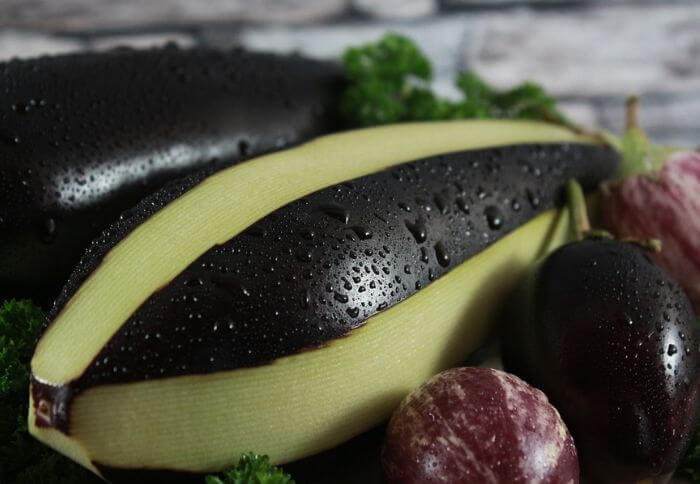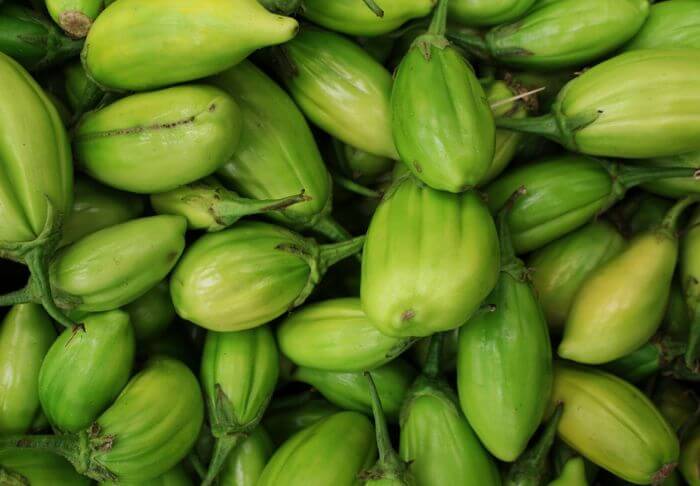Forget about boring old steaming or baking – when it comes to cooking eggplants, there’s a technique that takes their taste and texture to a whole new level.
Sweating eggplants is like giving them a rejuvenating spa treatment before they hit the pan – it not only enhances their natural flavors but also helps reduce any bitterness they may possess.
Whether you’re an adventurous foodie looking for exciting new recipes or simply someone who wants to impress their dinner guests with perfectly cooked eggplants every time, join us as we dive into the world of salting eggplants and discover how this simple method can elevate your culinary game in unimaginable ways!
What is Sweating Eggplants?

Sweating eggplants is a simple technique that helps to remove excess moisture from the vegetable before cooking. This process not only improves the texture of the eggplant but also helps to reduce bitterness. The process involves slicing or cubing the eggplant and sprinkling it with salt.
But why go through all this trouble? Sweating eggplants is particularly beneficial when it comes to recipes where texture plays a significant role.
By removing excess moisture, you prevent your dishes from becoming watery and maintain better control over how your eggplant absorbs flavors during cooking.
Additionally, this process also reduces any potential bitterness that can be present in certain varieties of eggplants or fruits at different stages of ripeness.
It’s like giving your dishes a clean slate to work with, allowing other ingredients to shine while ensuring that your meal is balanced and delectable.
What is needed when sweating eggplants
When it comes to sweating eggplants, there are a few essential ingredients and tools that can make the process smoother and more flavorful.
First and foremost, you will need a good quality sea salt or kosher salt. The salt helps draw out the excess moisture from the eggplant, which in turn improves its texture and reduces any bitterness.
Alongside salt, olive oil is another must-have ingredient for sweating eggplants. The oil not only adds richness to the dish but also prevents the eggplant from sticking to the pan during cooking. Opt for extra-virgin olive oil.
To ensure even cooking and maximize flavor absorption, a heavy-bottomed skillet or non-stick frying pan is highly recommended when sweating eggplants. This type of cookware distributes heat evenly and helps achieve that golden brown exterior with a tender interior we all crave.
Choosing the right eggplants

When it comes to making delicious recipes with eggplants, choosing the right ones is crucial. But with so many varieties available, how do you know which eggplant to pick?
One of the most popular types is the classic globe eggplant, which is large and deep purple in color. Its firm flesh makes it ideal for grilling or roasting.
For a sweeter and milder flavor, consider opting for the Japanese or Asian eggplants. These slender and elongated varieties are perfect for stir-fries or sautés.
Size also matters when selecting an eggplant. Smaller eggplants tend to have fewer seeds and a more delicate flavor than their larger counterparts.
However, larger sizes may be preferred if you plan on stuffing them as they offer more room for fillings and toppings. Additionally, feel the weight of an eggplant before purchasing it – a heavy one indicates freshness and moisture content.
Last but not least, pay attention to the skin of the eggplant. Look for smooth and shiny skin that has a uniform color free from bruises or blemishes. Dull-looking skin can indicate overripe or old eggplants that may taste bitter when cooked.
By carefully selecting your perfect eggplants based on their variety, size, weight, and skin condition, you’ll set yourself up for success in creating mouthwatering dishes that will surely impress your family and guests alike!
The Sweating Process
Washing and peeling
Washing and peeling eggplants may seem like a straightforward task, but it’s essential to ensure their optimum flavor and texture.
Start by giving the eggplants a good rinse under cold water to remove any dirt or debris from the skin. As these vegetables tend to have porous skin, washing them helps eliminate any lingering residue that could affect their taste.
If necessary, you can also peel the eggplant before sweating them. Peeling can be particularly useful if your eggplants have thick or tough skin, which might not soften during cooking.
However, keep in mind that much of the flavor resides in the skin itself. So, unless absolutely necessary, it’s best to leave it intact. Remember that when peeling an eggplant with thin or delicate skin, you might discard some of its flavors along with it.
Slicing or cubing the eggplants

The way you slice or cube your eggplants can make a significant difference in the outcome of your dish. While there is no one-size-fits-all approach, experimenting with different techniques can elevate your cooking game to new heights.
One popular method is slicing the eggplants into rounds, which allows for even cooking and a beautiful presentation.
The thickness of the slices depends on personal preference – thinner slices will result in crispier eggplants, while thicker ones will offer a softer texture. This technique is perfect for dishes like eggplant Parmesan or grilled eggplant sandwiches.
On the other hand, cubing the eggplants provides more surface area for them to absorb flavors and ensures faster cooking times. This technique works wonders in stir-fries and curries, as it allows the cubes to soak up various seasonings and spices, infusing them with rich flavors that burst in every bite.
Whether you choose to slice or cube your eggplants ultimately depends on the recipe and your desired outcome.
Whichever method you select, remember that consistency is key – aim for evenly sized pieces to ensure uniform cooking. So go ahead, grab that knife, and let your creativity shine through as you slice or cube those versatile purple gems!
Salting
After slicing or cubing, sprinkle them with salt, and allow them to sit for about 30 minutes. As the salt draws out moisture, you will notice droplets forming on the surface of the eggplant. This step not only ensures better flavor but also helps reduce oil absorption when cooking.
Removing moisture
Lastly, if you’re eager to cut down on sweating time but still want drier eggplants, try placing sliced or cubed eggplants in a colander lined with cheesecloth or paper towels and weigh them down with something heavy like a can or a pot lid for about 30 minutes.
This process allows gravity to do its job by pressing out additional moisture from the vegetable slices.
Resting Time
Allowing eggplants to rest, for about 30 minutes, after sweating is a crucial step that many home cooks tend to overlook. During the sweating process, the eggplants release moisture and become more tender, but what many people don’t realize is that they also absorb flavors from the surrounding ingredients.
By allowing them to rest for at least 30 minutes after sweating, these flavors have time to infuse into the eggplant, resulting in a more complex and delicious final dish.
Rinsing
First, place your salted and sweated eggplants in a colander or sieve under running water. Gently rub each piece with your fingers to dislodge any remaining salt on the surface.
As you do this, you’ll notice that the water turns slightly brownish, indicating that the bitter compounds are being washed away.
Different recipes or dishes that use sweated eggplants
One popular recipe that uses sweated eggplants is Babaganoush, a Middle Eastern dip made from roasted or grilled eggplant.
After sweating the eggplant to remove any bitterness, it is mashed and combined with garlic, tahini, lemon juice, and olive oil. The resulting dip has a smoky flavor and creamy texture that pairs perfectly with pita bread or raw vegetables for dipping.
Sweated eggplants are also great for making Ratatouille, a traditional French vegetable stew. In this dish, the sweated eggplants are cooked along with tomatoes, zucchini, bell peppers, onions, and garlic to create a flavorful medley of vegetables.
It can be served as a side dish or as a main course with some crusty bread on the side. The combination of tender eggplant slices and rich tomato sauce makes Ratatouille both comforting and satisfying.
Lastly, sweated plants are surprisingly delicious in curry dishes! By adding them to an aromatic blend of spices like cumin seeds, coriander powder, turmeric powder in coconut milk-based curries.
Sweating the eggplants before adding them to the curry allows them to soak up all the flavors while maintaining their meaty texture. This versatile ingredient adds depth and complexity to vegetarian curry dishes that will leave you wanting more.
Whether you’re looking for healthy dips or hearty stews loaded with flavor–sweating your eggplants opens up a world of culinary possibilities.
source:

